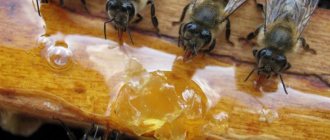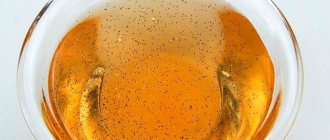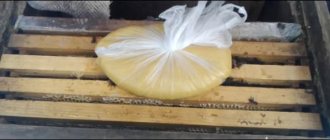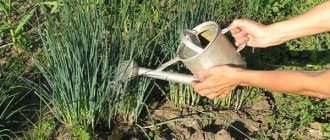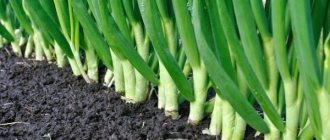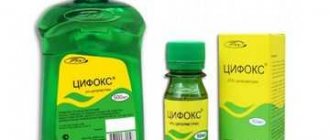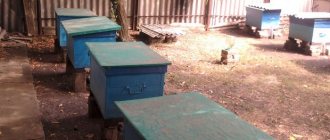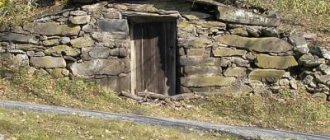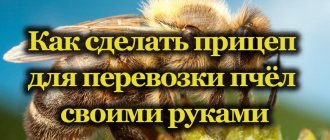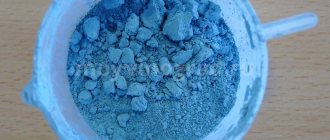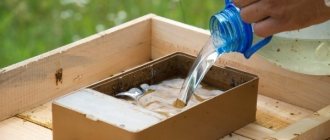Despite the fact that bees are independent insects, sometimes, under the influence of external conditions, difficult times come in their lives. Then the help of a beekeeper is required, which consists of timely preparation and feeding of bees, in the absence or shortage of natural food sources. If this is not done on time, then the bee colony without food may throw the brood out of the nest cells or simply die.
In modern beekeeping, there are several types of food for bees. Each fertilizer has its own advantages and is used taking into account seasonality. The lack of feed is replenished with mineral compounds, carbohydrates, proteins, combined or biologically active substances. Bees feed most often in spring, summer and autumn.
Why feed bees in early spring
We give protein food to bees in the spring because the hatching of offspring begins on the first warm day. And the offspring need:
- proteins to build a strong body;
- water, since the bee body consists of 75% of it;
- nurses who will transfer all the useful substances;
- constant temperature (34-35o), which is provided by working bees.
If one of these factors is lacking, young animals run the risk of growing up weak and defective. Therefore, in the spring, bees are fed well, so that they themselves have strength, and so that through them all the nutrients are passed on to their offspring. If the hive has a supply of honey (or better yet, honey with beebread) of more than 10 kg, they do not need additional food. But if there is no honey, the insects will not survive without your care. And if it’s also cold, in a month you won’t find a single living individual in the hive (but you’ll collect a lot of dead stuff. So-so consolation.)
Colonies that have weakened over the winter should have at least 5 kg of honey.
Egg
Sometimes an egg-pollen dough is used to feed a bee colony:
- Dry pollen – 1 kg.
- Honey with beebread – 0.5 l.
- Chicken eggs – 10 pieces.
- Powdered sugar – 3 kg.
Prepare as follows:
- The yolks are ground with powder.
- The whites are whipped.
- The honey is boiled and cooled.
Everything gets mixed up. You can add a small amount of liquid vitamins or Fumagillin.
The thickness of the dough should not spread out of the feeder at a temperature of about 35°C.
This food is introduced in May or another spring month, when:
- The family needs to add extra strength.
- Provide protein supplementation.
- Add vitamins.
- Get rid of diseases.
What and when to feed
The bees are fed during the spring inspection - the main inspection after wintering. Depending on the type (liquid, thick, doughy, solid) and the composition of the food (pollen and nectar, medicine, cobalt, invert), it is given repeatedly:
- daily;
- in 2-3 days;
- In 2 weeks;
- monthly.
You can stop spring feeding as soon as something blooms. Insects are much more willing to collect nectar from flowers, and they no longer need human handouts.
There are 2 fundamentally different types of food - carbohydrate and protein. Both come in liquid form (syrups), dough-like (candi, sugar, sugar-honey, protein) or solid (caramel, pure sugar).
Important! Dough mixtures for feeding bees should mature for a day at room temperature. Ripe ones are more viscous to the touch and remain on the fingers when crushed.
Protein feeding is good only if there is no natural pollen. In order not to waste a good product, feed in small portions (75-100 g per street).
On carbohydrate feeding alone, colonies can live for a long time, but they cannot fully raise brood (they need protein), secrete wax, build honeycombs, process a lot of nectar, etc. Carbohydrate feeding is used so that the bees survive until honey plants bloom. In addition, they allow you to stimulate more brood (if there is enough other food) and activate flight bees. If you add medications to the fertilizer, you can treat or prevent diseases.
Important! Sucrose from sugar is 2.5 times more difficult to process than sucrose from nectar. To make the sugar supplement better absorbed, add vinegar (0.02% of the total mass).
However, sugar has advantages over natural food in terms of absorption. There is less than 1% of undigested residues from sugar syrup, whereas:
- from herbal honey – 2.5%;
- from pollen in its pure form – 25% (due to cellulose);
- from fresh bee bread - 21% (better than pollen, since it is put into a cell, partially digested).
Note: Frozen bee bread is digested better, since pollen shells burst when frozen, and bees require less energy to process food enzymes.
This is why bees overwinter on honey, and only get to the frames with beebread in the spring, when it is time to raise brood and there is an opportunity to fly around, and not accumulate leftovers in the body.
Cobalt
But when you want to increase the number of young bees, it is advisable to feed your apiary with cobalt chloride, which can be purchased in specialized stores in the form of tablets. It helps stimulate the immune system, saturates it with vitamin B12 and achieves the greatest effectiveness if the dosage is observed:
- Prepare sugar syrup in an amount of 1 liter.
- Add crushed cobalt chloride weighing 2 mg to the common container.
- It is important to understand that when the dosage is reduced, the therapeutic effect disappears.
This method is used before the first flight, in March or April, depending on climatic conditions in a particular season. They are laid using the intra-hive method according to the 3 through 3 scheme.
You can perform this manipulation again in August.
Types of liquid food for bees
Liquid fertilizers come in different consistencies:
Thick and medium feeding - to replenish feed supplies. As a rule, this is sugar syrup (1 to 1 or thicker) or honey dissolved in a water bath, mixed with beebread.
Liquid – to increase brood. Usually this is 30% syrup or a solution of honey (1 liter of honey per half liter of water), give it 200-300 g per day.
There is a list of sugary drinks that should never be given to bees:
- glucose in its pure form (for this food to be digested, you need to add at least a third of the amount of sugar);
- starch syrup (kills bees even in its most liquid state);
- juices: fruit, vegetable and even tree juices like birch or maple (contain a lot of acids and minerals, so they are unsuitable for bees);
- soft drinks (for similar reasons for juices).
Note: bees cannot tolerate alcohol, so a minke whale that drowns in a glass of liqueur is clearly a wasp.
When giving sweet feeding, in order to avoid theft, do not spill the food, and especially do not pour out the remains of the feeding near the hive. You will attract unnecessary attention from wasps, ants and other troubles.
Oil
Also, if you want to improve the health of your apiary, you can use this recipe with sunflower oil:
- Liquid honey – 1 kg.
- Powdered sugar – 4 kg.
- Sunflower oil – 1 tbsp.
- Medicine Nozemat in the quantity recommended on the package.
All components are thoroughly mixed by hand until a homogeneous mass is obtained and laid out on a clean sheet in the hive. Can be used in any summer month - June, July, August.
Protein feeding of bees in spring
Protein is critical for growing bee offspring. The main natural source of protein is pollen. Bees can feed their offspring without it using the reserves of their body, but not longer than 2 weeks - the load is too high.
Percentage of protein in the bee body:
- on sugar syrup – 34%;
- on honey-beebread mixture – 52%.
In the spring, you can feed the bees with both natural (use bee bread and pollen) and artificial protein-containing mixtures. In the second case, you need to know the features of protein feeding and its effect on the bees’ body.
Feeding time
When exactly it is necessary to feed bees, each beekeeper decides independently, based on the weather, climate, terrain and flowering of honey plants. It is important to determine what kind of honey you should get. Let's look at the example below.
To obtain linden honey during the flowering period of this plant, it is important to grow as large a family as possible. To do this, you need to know when the linden tree will bloom (it’s different in each region). For example, flowering occurs at the end of June-beginning of July. Complementary feeding should be started approximately 85 days in advance. This is the period during which wintered bees change and new offspring are hatched, ready to fly around.
Feeding bees with beebread
The ideal way to feed beebread is in frames (preferably filled with honey and sealed). Such frames should be stocked during the period of active pollen collection, when the loss can be easily replenished. It is more difficult to store bee bread than honey. From humidity, beebread becomes moldy and spoils; from dryness, it dries out and turns into lumps; from freezing, it loses its nutritional qualities. Ideally, bee bread should be stored in a closed box (for example, an empty beehive), in a cool but dry room. The optimal temperature for storing bee bread is 1-8o (so that wax moths do not start).
Note: if the bee bread is not useful to the bees, you can eat it yourself. It is rich in iron and contains easily digestible natural vitamins and amino acids (this is not a joke, beebread is really very useful for humans)
Canned bee bread also retains all its nutritional properties and can be stored for several years. To prepare it you need:
- scrape the honeycomb down to beebread (with a knife);
- cut the rest into strips;
- mince;
- pour honey into glass jars;
- roll into a jar with a lid.
When feeding is not needed
Feeding is not needed if enough food has been left in the hive since autumn. The approximate norm is 1-1.5 kg per month per family. If there is enough food, it is better not to disturb the insects until the beginning of spring.
Conclusions about the need for additional feeding should be made not only based on the amount of food in the nest; the most important criterion is the quality of the product. Crystallized honey, or containing a lot of honeydew, is replaced with fresh honey. However, by the end of winter there is not always a fresh product of suitable quality, then other fertilizers are used, which we will discuss below.
Additional feeding of bees in winter can lead to some negative consequences:
- insects wake up early and enter an anxious, excited state;
- early profuse darkening of the uterus;
- the occurrence of digestive problems, the risk of diarrhea.
Feeding bees in spring with bee bread substitute
If you don’t have bee bread on hand, you can use special protein dough. To be considered a bee bread substitute, the food must contain:
- from 15-20% protein;
- 1-8% fat;
- 2-3% minerals;
- 1-5% starch;
- no more than 5% fiber.
Tip: The effectiveness of the beebread substitute increases if you add 10-15% pollen to the mixture (in addition, this adds vitamins and minerals).
The most successful protein options in order of decreasing nutritional value:
| Substance | % fertility of bees compared to beebread result |
| dry yeast | 50% |
| whole milk | 20% |
| dry cream | 15% |
| whole egg | 10% |
| egg yolk | 10% |
| egg white | 0,1% |
| Rye flour | 0% |
The best substitutes for bee bread are brewer's yeast and cow's milk. However, yeast protein is deposited in the bee’s body for its own nutrition, and milk protein is used to feed the larvae (for comparison, bee bread protein is applicable for both processes), so in the spring it is better to knead protein dough with milk.
Recipes for feeding bees using bee bread substitutes
The following dressing recipes have different consistencies:
- Recipe for feeding with milk and syrup : Mix 2 kg of sugar per 1 liter of water, Add 1 liter of milk while stirring. Give at night in small portions (250-400 g).
- Recipe for feeding with milk and honey : Mix dry milk with honey to a dough-like mass.
- Recipe for feeding with sugar syrup and yeast : Liquid sugar syrup 1 to 1, + 100 g of fresh baker's yeast, ground in a mortar with syrup, Add to the total mass, Bring to a boil.
- Recipe for feeding from whey, honey and powdered sugar : 15% albumin curd (from whey); 15% liquid honey, 70% powdered sugar.
- Feeding recipe with egg and sugar syrup : beat eggs, pour into syrup of desired thickness, apply to honeycombs or pour into feeder.
Syrup
When insects do not have enough of their own reserves, it is necessary to use additional feed. This occurs in the summer in bad rainy or windy weather or when there is no normal level of bribe. In this case, bees without food first begin to get sick, and then the whole family can die out. To prevent this, you can use one of the old methods, which is to use sugar supplements, specifically syrups.
Here's how you can prepare and then properly feed bees with these ingredients:
- Sugar and water in equal proportions are taken to prepare food in the case where there is no bribe at all.
- 1.5 kg of granulated sugar and 1 liter of water when autumn comes and it is necessary to prepare the bees for the winter.
- 1 part water and 2 parts sugar - when adding food late. This option will help insects survive a long winter or during a long cold spring.
- To improve nutritional quality, you can add a small amount of honey.
Here's when you need this kind of feeding:
- When it is necessary to replace low-quality honey in order for the apiary to overwinter successfully.
- When there is not enough honey in the hive in the spring until natural food appears in nature.
- If there are few flowering plants, but it is necessary to stimulate the cultivation of young plants.
- If last season there was a foulbrood disease in the apiary, then such food will become a preventive measure.
- Overwintering of bees exclusively on saccharine can be allowed, as this makes raising offspring difficult.
Feeding from flour and soybeans for bees
When there is not enough pollen in nature, bees go hungry for flour - they raid barns, warehouses and bakeries. In laboratories they found that soybean and cottonseed flour have the best nutritional properties (rye flour has the worst nutritional properties). However, brood does not grow on flour alone, and bees cannot digest starch, but on a special flour mixture (for example, soy), an average of 7,000 new bees grow for every 400 g.
The ratios of ingredients and methods of supplying this fertilizer are different:
- 75% soy flour + 25% pollen, mixed with sugar syrup to a dough-like mass;
- 70% cotton flour + 30% pollen - pour into honeycombs, pour sugar syrup, let it brew for a day and set it for the bees, sprinkled with honey;
In terms of digestibility, flour is worse than bee bread - 50% of indigestible residues. To help the bees digest, you need to preheat the flour (frying is not necessary) so that the shells of the starch grains are partially destroyed, and then the digestive enzymes will do their job.
One of our readers, Victor, in the comments gave his point of view on the topic of heating flour, and it is quite logical. In short, when flour is heated, the shells of starch grains are indeed destroyed, but the temperature of their destruction is much higher than the temperature of protein destruction. Therefore, heating the flour, and even more so frying it, leads to the fact that such bee food becomes simply useless, since it no longer contains the necessary proteins.
It is good to mask the taste and smell of soy flour with yeast. To do this you need:
- Boil baker's yeast in sugar syrup, 15% bee bread, 70% soy flour;
- Stir soy flour (70%) and bee bread (15%) into the cooled solution until a thick dough forms;
- the norm is 400-500 g per family.
Yeast is also contained in soy mixtures for bees:
- Czechoslovakian “Soyapin” (90% soy flour, brewer’s yeast, heteroauxin).
- American "Gaydaka" (30% soy flour, 10% milk powder, 10% brewer's yeast, 5% egg yolk, 5% casein - milk protein).
Garlic
Garlic is used for preventive purposes. For this option, you must first prepare syrup from the aromatic plant. It is done as follows:
- Chop 2 heads of garlic.
- Fill with 1 liter of water and infuse.
- And then take only 2 tablespoons of this garlic infusion into 1 liter of sugar syrup.
This garlic feeding is actually a treatment for the bee colony. It can be performed almost all year round - the first one is done in early spring before the first flight, and ends in December.
Spring feeding with sugar syrup
Sugar syrup is an excellent energy carbohydrate feed for bees. Fast carbohydrate acts on them almost like on humans, increasing activity: flying individuals are more willing to collect bribes, nurses feed their babies more diligently, and the queen lays more eggs. Whatever the consistency of the syrup, it is important to follow simple rules for its preparation:
- Boil in a clean, non-oxidizing container.
- Avoid burning to prevent the formation of substances harmful to bees!
- To make it easier for bees to process, you can add 0.2 g of acetic acid per 1 kilogram of sugar.
- Bees absorb the 60% solution best.
- Take the highest quality and purest sugar that is available on the farm (beet or cane).
- Beware of smears - they can contain substances that are very harmful to bees.
Procedure for preparing syrup
- Boil water.
- Slowly add sugar, stirring continuously.
- Do not boil again!
- Cool to 40-45o - and into the hives.
Advice: There is no need to give sugar syrup in large portions to weak bee colonies. If they don't master it in time, it may ferment.
In addition to the usual sugar-water-vinegar syrup, there are recipes for bee feeding with milk. Sugar-milk mixtures increase brood in weak colonies, since milk is a protein. The two most popular recipes for sugar-milk mixture:
- Add 5% milk to the cooled syrup of 70% sugar and 25% water immediately before serving.
- Heat 1 liter of milk and 1 kg of sugar to 60°, give 300-400 g daily.
More detailed information on how to prepare sugar syrup and how to feed it to bees
What drugs can be added to complementary foods?
We will separately consider the question of what drugs can be added to complementary foods, at what temperature bees can be fed in the spring, and what causes diseases in the family.
After winter, the hive needs to be disinfected, or better yet, replaced with a new one. Be sure to check the offspring for diseases, which often occur due to high humidity and lack of food.
The main diseases of bees include:
- Varroatosis. It is formed due to mites that settle on the bees themselves and feed on their lymph. Infection quickly spreads throughout the hive, which can lead to the death of the family. Veterinarians use the antibiotic "Apifin" for treatment. And also red pepper, the recipe for which is very simple: ground or capsicum is diluted with water (8 g per liter). Infected female workers are sprayed with this solution;
- Salmonellosis. A disease of the digestive system of bees caused by helminths. Indicative signs of the disease are frequent insect bowel movements and a swollen abdomen. Treat with “Streptomycin” and “Tetracycline”, adding them to complementary foods;
- Nosema is detected by the condition of the hive walls. With this disease, the honey plant defecates on the floor with liquid stool of a constant nature. It is contagious because it is formed by single-celled organisms. The disease is treated with Furmaggelin, adding it to complementary foods.
On a note! To prevent diseases in working women, crushed garlic is added to the complementary foods (separately on the substrate). One slice is enough. It will act as an air disinfectant.
Next, we’ll look at what and how to feed families.
How to feed bees correctly
to distribute sweet, sticky food :
- in the evening, so that there is no theft in the apiary;
- in warm weather, because fed bees begin to fly vigorously, and bees that fly out in bad weather risk not returning back.
How to give liquid fertilizer:
- in external feeders (so as not to go inside the hive);
- in the rear feeders (the most reliable against theft);
- in the upper feeders (then the syrup is warm all the time);
- in plastic bags with food (hungry bees chew through them very well);
- in cans (of various sizes and materials);
- in a honeycomb (it’s convenient to pour from a teapot with a long spout).
I repeat - be especially careful with liquid fertilizers. Do not spill them near the hive, otherwise more active neighbors will steal all the supplies from the weakened family.
Feeding from bags
You can make a feeder from plastic bags. The main advantage of this feeder is that it is hygienic. If you use packaging bags, you can reduce the number of diseases that are transmitted through the feeder.
Particular attention should be paid to the thickness of the packages. The best option is thin bags that allow the smell to penetrate through micropores. Thus, the bees will happily absorb the food. Bees pierce the bag with their sting, so the beekeeper should not do this himself.
The process of making a disposable feeder:
- take a plastic bucket, place an empty bag in it;
- Pour the prepared feeding solution into the opened bag;
- tie it tightly;
- open the hive and remove the insulation;
- carefully and smoothly place the bag feeder on the appropriate frames;
- close the hive, return the insulation.
After a few days, the bees will begin to feed from the feeder. If the structure does not arouse their interest, it is recommended to add natural honey to the solution. If you are a beginner beekeeper then read more about bee feeders.
Sugar protein dough as an analogue to syrup
Yes, it looks like pie dough.
But this is definitely not it. If you don’t want to bother with liquid fertilizers, you can make the dough with the addition of powdered sugar. The most effective protein components (in descending order of absorption):
- Pollen,
- Protein hydrolysates (for example casein hydrolysate - milk protein),
- Yeast,
- Cow's milk,
- Soybean and cottonseed flour.
All dry ingredients must be finely ground (according to GOST - 0.2 mm).
Recipe
- Mix liquid ingredients
- Add protein (10-15%),
- Stir in powdered sugar to desired consistency.
Place the evenly rolled pancake on the frame.
Tip: pre-cooking the protein components improves their digestibility (and vinegar helps digest sugar).
Honey
It is mandatory to feed the bee colony with honey. Moreover, use only high-quality products to maintain health.
At the same time, if you are printing a frame with old, crystallized honey, you must first soak it with warm water. Only after this can you transfer it to the nest.
It is dangerous to use a fermented product. Moreover, it is also dangerous to bring it to a certain consistency or state by boiling. This should not be done under any circumstances.
It is also necessary to take into account that after wintering in the expanded nest, unprintable honey may liquefy. It must be taken out and given to strong families, otherwise, in the near future, it will begin to ferment.
If the beekeeper detects a lack of nutrition, then you can give them dried honey. But before that, it must be brought to a consistency by diluting it in a 1:1 ratio with water and bringing to a boil so that all the crystals dissolve. Then everything develops along the feeders.
Jelly recipe for bees
Such supplements can also be prepared in the form of jelly (proven effect + 60% to brood). For this you will need:
- 10 kg of pollen with sugar (1:2);
- 8 liters of heated water;
- 120 g of gelatin or agar-agar, diluted in a liter container.
How to prepare fertilizer
- heat the gelling component;
- add it to the water-pollen-sugar mixture;
- pour 2 cm into baking trays;
- leave to set overnight;
- cut into pieces of 200-300 g;
- lay out exactly the same way as flatbreads, directly onto the frames.
Reasons for fasting
In order to eliminate the problem, you need to understand the reasons that caused it. Often, starvation of hive inhabitants during the wintering period is explained by a lack of food supplies . The beekeeper may incorrectly calculate the required amount of feed or simply be greedy.
The second reason is excessive crystallization of honey left for the winter. The rate of crystallization is affected by the ratio of fructose and glucose (fructose slows down the process), as well as the ambient temperature (higher speeds it up).
Honey crystallization is a normal natural process. In some cases it goes faster, in others – slower
The third reason is the use of honeydew honey (honeydew) as winter feed .
Bees produce honeydew by processing sweet products secreted by other insects or collected from the leaves of trees and shrubs. It is often mixed with flower honey.
The presence of honeydew in feed negatively affects wintering and can lead to mass death of individuals. The large amount of minerals in honeydew honey makes it healing and beneficial for humans, but not for bees. This type of honey differs from ordinary honey in the absence of aroma and a more viscous and thick consistency. Honeydew is less sweet, rarely crystallizes, and has a dark color (it can easily be confused with buckwheat or heather honey).
In case of doubt, in order to check the presence of honeydew in the food, use a simple and reliable method: press on the cells with suspicious honey with a teaspoon and take out a small amount of the contents (0.5 spoons). Place it in a container and add 0.5 teaspoon of distilled or boiled water there. Mix thoroughly and pour in two equal volumes of lime water. Then mix well again and heat to a boil over the flame of an alcohol lamp or candle. If there is no honeydew, the solution will remain transparent, but if it is present, it will become cloudy and brown flakes will fall to the bottom.
You can learn in detail about the main qualities of honeydew honey and its differences from flower honey from the following video:
The fourth reason is the inexperience of the beekeeper and mistakes when collecting the nest for the winter .
According to calculations, there should be enough food for the entire winter period, but if the nest is placed incorrectly, when the fuller honey frames are located on the sides, and the low copper frames are placed in the middle, problems arise. Insects, having eaten food in the middle of the nest, cannot move to the side frames. This is due to the fact that the bee club is spherical in shape, divided by honeycombs into several layers. The thickest layers are in the middle, the smallest are at the edges. In autumn, the club is located at the front wall of the hive closer to the entrance and occupies the honeycombs from which the last brood hatched. Eating food, the club slowly rises to the upper bars of the frames, and then each layer moves along its own street to the back wall of the hive. For normal wintering, the nest must have frames containing at least 2 kg of food.
Identification of signs of trouble caused by a lack of food, its crystallization or consumption of honeydew demonstrates the need to take urgent measures - to feed the bees in winter.
Feeding bees with pollen
Since bees eat pollen, you can also feed them pollen.
How to collect pollen
- Dry tree catkins (for example hazel),
- Shake off flowers in the morning, dropping them into the necessary containers (you can even use corn),
- Collect pollen using pollen traps on the hives,
- Remove from bee bread frames and grind into dust.
How to give pollen to bees
Pour into empty cells to a third of the depth and sprinkle with 25-30% sugar syrup. Place the filled part towards the brood.
A honey-pollen mixture (1 to 1) is more effective than pure pollen, since insects attack honey more actively. The instinct is to put honey into cells, but they cannot put honey and pollen together, so all that remains is to eat. As a result we get:
- 2 times more brood.
- 3.5 times more wax.
- There are 5 times more queens in colonies of nurse bees.
Every 200 g of honey-beebread mixture is best diluted with 100 g of salted water (1%).
How to give the mixture to bees
- Spread it on the honeycomb with a knife, like butter on a sandwich.
- In special feeders.
- In flat cakes on a frame (at least 1 layer of gauze) 200-300 g per day.
Organization of feedings
Additional winter feeding is a very important undertaking, and it must be treated accordingly. When choosing food, many different circumstances are taken into account:
- time of the planned procedure;
- degree of family strength;
- region;
- conditions of detention (on the street, in the village);
- specifics of feeding insects wintering in the air;
- consistency of feed, etc.
Food must meet certain requirements. A necessary condition is optimal fluid balance. In feed with a high moisture content, fermentation processes occur, dry food crystallizes, becoming unusable.
Sometimes it is necessary to insulate the feeders so that the food does not freeze and remains in the desired state of aggregation for quite a long time.
Feeding bees with honey in spring
The most ideal food for bees is honey stored in the fall and sealed in frames.
But even these must be given with understanding:
- in early spring - full-copper honeycombs (dark);
- during the period of nest expansion - low-copper (light);
- The bees will drag the printed honey (even in the outer combs of the hive) to the center, closer to the brood.
Tip: Warm up the frames (within reason) before feeding the honey to the bees.
Honey feeding must be done very carefully to avoid theft.
You can also give honey in other types - for example, in a shriveled state:
- heat to dissolve the crystals in a water bath, otherwise it readily burns at the first opportunity;
- You can speed up dissolution by adding half a glass of water per kg of honey
- stir continuously;
- serve warm.
Feeding bees at the end of winter
In different apiaries, bees are fed during this period in order to prevent the loss of families from lack of food, to prevent and treat various bee diseases, and also to accelerate the growth of families. Now it is believed that this is what determines the results of future honey collection (all other things being equal). If there is sufficient food supply for the bees in the winter, it is advisable to start feeding them when the bee colonies emerge from winter dormancy. This comes with the awakening of nature, when every day the sun rises higher and higher, when plants awaken, when the day lengthens and becomes warmer. The bees sense this and begin to raise brood: the period of intra-club rearing begins. If before this, colonies, as a rule, spend a small amount of food reserves, then when raising brood, the bees are forced to raise the temperature in the nest to 34-35 C, and therefore food costs increase significantly. In families, the reproductive instinct awakens, which is caused by natural factors, and this is normal.
How to give honey correctly
- in a special feeder;
- in glass jars (volume – half a liter, liter);
- in earthenware;
- pouring (clean!) honeycombs into the cells is a method only for apiaries where there are no diseases, otherwise the infection with the food will quickly spread to all the bees.
How to pour honey for bees
- Place in a basin, trough or other suitable container;
- First fill the honeycomb on one side, then on the other;
- Hold vertically to allow the syrup to drain;
- Place in the hive.
How to give honey in jars
- pour to the top;
- cover with canvas in several layers;
- tie with a rope:
- turn over and observe: If it drips quickly, you need to add another layer of canvas, otherwise the bees will be flooded, they will stick together and die. If it leaks out a little bit, that’s what you need!
- place on frames in the middle of the hive.
How to properly install honey frames for feeding bees
It would seem that it would be easier to give the bees honey in a frame? But when it comes down to it, you will doubt it. And the rules are simple:
- pre-warm the frame;
- pull out the empty one (without honey and brood);
- Place the new one on the southern wall of the hive.
When placing frames, make sure that their number corresponds to the strength of the family. Bees must cover the streets completely, otherwise the outer ones will be poorly heated and the brood on them will die.
- if the frame is full of printed honey, it is better to place it on the edge;
- If there are empty cells in the frame that are suitable for brood, it is better to place it closer to the center, to the existing brood.
If the bees do not yet have their own bribe, you can print out honey in small portions in the existing frames - this will increase the number of brood.
For Ruth hives with Langstroth frames, food extensions, also stored in advance, are well suited.
Why is it necessary to use protein food?
Feeding with honey is the main type of nutrition for bees. On average, one healthy bee colony uses about twenty-five kilograms of honey over the winter. If the reserves left in the hives are not enough, you can melt the old honey and give it to the bees.
However, in addition to feeding bees with honey, protein-rich nutrition is no less important, especially in the spring, when active egg laying occurs and young bees are maturing. Protein-rich feeding not only stimulates the uterus to lay eggs, but also helps to “fly” healthy and strong offspring as quickly as possible.
For example, although yeast nutrition for bees is a good stimulant, it cannot always replace high-quality protein. The main types of protein feeding include:
- Kandy;
- Perga;
- Pollen;
- Soy flour;
- Powdered milk.
Advice:
It is worth noting that from the above list only bee bread and pollen are natural protein feeds for bees. The rest are substitutes, albeit of high quality, but it is still better to try to use products more familiar to bees.
If there is a lack or complete absence of bee bread, the uterus stops laying eggs. This in turn stops the growth and development of the entire family. For this reason, it is necessary to carefully ensure that the hives have frames with beebread. If the bees have prepared a fair amount of it during the season, then some frames can be stored.
Store bee bread by cutting it off the frames and rubbing it through a sieve. Small balls are formed from the resulting mass, placed in jars and filled with honey. If necessary, bee bread is melted and given as additional food. Depending on the situation, bee bread can be diluted with a water solution of sugar.
If feeding bee bread in the spring is difficult due to its small quantity or absence, then resort to the help of the substitutes indicated above. However, if there is pollen in stock, then first of all we feed it with pollen. If pollen is available, you can use the following recipe. A kilogram of pollen is mixed and two hundred grams of honey are mixed with the addition of 150 milliliters of water.
Also, a good alternative to bee bread is feeding bees with soybean flour. You can prepare this kind of fertilizer from soybean flour. Pollen and flour are taken in a ratio of three parts flour to one part pollen. From this composition, dough is kneaded with sugar syrup.
Powdered milk can also be used for feeding. For two hundred grams of which take a kilogram of sugar and eight hundred milliliters of boiling water. Milk and sugar are dissolved in boiling water and passed through a sieve. This type of fertilizing should not be done in large quantities because it turns sour very quickly.
Feeding candy is feeding the bees with a special carbohydrate food with a dough-like consistency. There are several recipes for this dressing. One of them looks like this:
- Eighteen hundredths of a percent water;
- Twenty six percent honey;
- Two hundredths of a percent acetic acid;
- Seventy-four percent powdered sugar.
Kandy using honey is considered by beekeepers to be the best recipe for this feeding.
Honey satiation recipe
Any experienced beekeeper always has his own special recipes for anything and everything, including honey satiety. All the necessary ingredients are water and honey, but there are some cooking features that we will tell you about. For example, in the spring, bees should not be given a lot of water; accordingly, we add more honey to the honey mixture and make it thicker. Some additionally add various herbs and spices, even pieces of finely chopped lard.
Honey satiation is an incentive feeding to increase the brood (the queen begins to lay more eggs), which is why it is given mainly in the spring. It is best 4-5 weeks before swarming begins.
Consistencies used:
- thick – 4 to 1 – for feed;
- medium - 1 to 1 - incentive feeding or a means to sprinkle the uterus when joining families;
- liquid – 1 to 2.
Interesting fact : in ancient times, in Russia, honey wine was made from food. At that time it was (according to the degree of dilution with water) one and a half, double, triple and quadruple. So I went to feed the bees, and at the same time, a mug for myself. Everything is natural. Useful.
Honeycomb
Honeycombs can be used to add this type of feeding to feed them. It has maximum benefits, as it is close to natural beekeeping products. With its help, you can increase the size of the family, stimulate egg laying in the uterus, increase the level of immunity, and increase the population.
Experienced beekeepers also mix a variety of medicines into the feed to combat diseases.
Sita can be performed in different concentrations, depending on the main purpose of the appointment:
- The middle one is made for incentive feeding. This is how the uterus increases egg production.
- Dense is able to replenish food reserves. Most often used as an early spring plant.
- Liquid is used to unite layerings into one family.
The prepared mixture can be used on ceiling feeders or poured into honeycombs. Also suitable for feeding in spring, summer and early autumn.
Among the main components are full:
- Liquid honey
- Candied product.
- Ground honey with the exception of wax residues.
- Plant roots.
- Remains of dried ants.
- Salo.
- Cloves for scent.
- Pepper.
Feeding Kandy bees
Kandy is the same dough-like honey mass, only instead of whole sugar and syrup, powdered sugar is used (the finer the better, in a good way - no larger than 0.2 mm). As a top dressing it is even better than honey:
- it is not placed in cells, but is immediately used to feed the brood;
- the activity of bees does not increase, so you can give it in bad weather, and even in winter;
- Can be prepared ahead of time and stored (in an airtight container).
According to GOST (more precisely, TU 10 of the RSFSR 339-88), the composition of candy is:
- 26% honey (ripe, liquefied in a water bath)
- 73.8% powdered sugar (you can grind sugar in a coffee grinder)
- 0.18% water
- 0.02% acetic acid
Cooking Kandy
- mix everything until completely homogeneous;
- package into flat cakes 800 g - 1 kg;
- wrap in gauze or bandage, maybe in a plastic bag (so it doesn’t dry out, but poke holes so the bees can get there!);
- place directly on top of the frames.
If there is no honey, but there is invert sugar (glucose and fructose syrup), the ratio is as follows:
- 70% powdered sugar,
- 29.8% invert syrup,
- 0.1% drinking water,
- 0.03% acetic acid.
For more detailed information about the varieties of Kandy for bees, the beneficial properties of this fertilizer and how to give it to bees, read the article Kandy: recipes and proportions.
Features of different fertilizers
Sugar syrup
As mentioned above, preparing sugar syrup will not be difficult even for a novice beekeeper. However, in this matter, as in all beekeeping, there are some nuances. The classic recipe for feeding syrup is to dilute sugar in boiling water in equal proportions. But be careful, the portions and thickness of the syrup vary depending on weather conditions.
A sharp cold snap or strong wind have a detrimental effect on bees, so on such days the thickness of the syrup is increased and the thick fertilizing is less likely to provoke bees to fly. Thick syrup should be given to bees only in cases of serious need.
Important!
Feed that is too liquid is also not very good because it takes a lot of energy to process. If you abuse liquid syrup, the family can become very weak or even die. Here it is worth sticking to the golden mean.
If you add honey to the syrup, then such feeding will be much more productive and healthier than regular syrup. Honey makes sugar easier to process into glucose. A large amount of honey is not required for this feeding. Usually, no more than forty grams of honey per kilogram of sugar is taken.
It is strictly forbidden to give spoiled syrup to bees. Burnt, fermented or one that has been stored for a long time. Therefore, feed should be prepared only in the amount that the bees are able to eat in one meal. It is also not recommended to give cooled syrup. Bees do not eat this kind of food well and for better consumption it will have to be constantly heated.
Sugar syrup is easy to make and relatively cheap. However, in some cases, it is not able to fully solve the problem of restoring the strength of the bee family. In such cases, alternative options can be used. For example, protein dough. Sugar protein dough as an analogue to syrup
– this is one of the best options for quickly restoring bees weakened in winter.
Preparing this type of feed is not particularly difficult. The same sugar syrup is used as the basis. It is prepared by mixing one part sugar with two parts water. Additional ingredients are added to the prepared and cooled syrup in the following proportions:
- Dry brewer's yeast - one part;
- Powdered milk - one part;
- Soy flour - three parts.
To achieve the maximum effect from such feeding, it is recommended to introduce pollen into its composition in a ratio of fifteen percent of the total mass of the feeding.
Yeast feeding
If you need to increase the brood, then you can use another interesting alternative to simple sugar syrup. It involves feeding the bees with yeast. Yeast contains a lot of useful substances and vitamins, including easily processed protein.
The preparation of such feed consists of preparing sugar syrup at the rate of one part water and one part sugar. Taking one liter of the resulting syrup, 250 grams of yeast are introduced into it.
For this purpose, fresh baker's yeast or dry brewer's yeast is used. Brewer's yeast is sold in the form of tablets and one liter of syrup will require twenty-four tablets. If you use dry baker's yeast, you will need four times less than fresh yeast. Before use, they must be filled with warm sweet water and left for a day in a warm place.
After introducing the yeast into the syrup, the mass is thoroughly stirred and ground, after which another four liters of syrup are added. Boil the resulting volume over low heat for several minutes. As a result, we get a five percent yeast supplement. It has a very significant effect on increasing the number of offspring.
Honey is full
Speaking about different types of sugar syrups, we should not forget about this type of feeding as honey satiation. This is, of course, not exactly sugar syrup; more precisely, it is honey syrup. Honey, like sugar, is diluted with water and given to the bees. Some beekeepers consider this method to be economically unprofitable. Meanwhile, it is worth considering that honey contains all the microelements and vitamins necessary for bees. To this we add the excellent digestibility of this supplement and the composition being as close as possible to flower nectar.
Using food helps strengthen the bees' immune system and stimulate vital processes in the body. If there is a need to quickly increase the size of a bee colony and increase the productivity of oviposition, satiety is an excellent solution. When you are full, just like in sugar syrup, you can add the necessary additives, including medications.
Depending on its concentration, honey satiety has different effects and is used in appropriate cases. In order for bees from different families to quickly get used to each other, they are sprayed with a well-fed liquid. You can stimulate the reproduction and emergence of bees by using medium-consistency bees. Thick syta is used directly as feed.
When preparing syta from candied honey, it must be dissolved in a water bath. After this, you can add water in the required proportions. Regarding the proportions of water and water for satiety, three main recipes can be given:
- Thick, full - four parts honey, one part water;
- Liquid satiety - one part honey, two parts water;
- Average full - one to one.
The average bee colony can eat from a liter to a full liter and a half at a time. Satiety is usually achieved using ceiling feeders. Rafts are installed in them to make it convenient for the bees to perch. In addition to ceiling feeders, all traditional means of dispensing feed are also used.
Recipe for feeding bees with pine needles
Such an exotic component as needles can also be useful in beekeeping. It contains a large amount of vitamins and essential oils. By itself, pine extract is not a ready-made fertilizer. This is only an additive with a powerful bactericidal effect, which can be used in the preparation of sugar syrup, kandi or the same honey syrup.
What else is useful for feeding bees with pine extract:
- activates egg laying;
- enriches the bees' body with vitamins;
- protects against ticks.
If you want to prepare a pine infusion with your own hands, do it as follows:
- Grind 1 kg of pine needles.
- Boil in 5 liters of water.
- Leave for 8 hours, wrapped in a blanket.
- Meanwhile, prepare thick sugar syrup (1 liter of water and 1.2 kg of sugar).
- Pour 200 ml of strained bitter green infusion into the syrup.
- Feed every two days for 10 days.
You can buy pine extract. The finished product should be added to the feed in a ratio of 1 g per 1 liter.
Pine extract
Such compositions help provide the bee colony with the necessary vitamins, providing timely support and maintaining the health of the apiary. Coniferous extracts and formulations have a similar effect as ginseng root.
Prepare such food for the family as follows:
- Pine needles (can be replaced with spruce needles) - in the volume of a half-liter jar.
- Sugar syrup – 3 l.
- Prepared water – 0.7 l.
- The needles are ground using a blender or meat grinder. Then it must be poured with boiling water and left for at least 2 hours.
- After aging, remove the green mass and stir with sugar syrup.
- What happened during decanting can not be thrown away, but the compositions can be re-prepared. After all, ascorbic acid will be present in the required quantity in the cake.
Stimulating scarring of the uterus with drugs containing cobalt
Scarring is an obsolete name for the laying of eggs by a queen. To stimulate the growth of brood, you can give the bee colony feed mixtures with cobalt chloride or cobalt sulfate in early spring, while there is still no good bait.
Note: hypocobaltosis, or cobalt deficiency, is a rather harmful and fatal disease that affects many animals and insects, even cattle. And all because cobalt is an important element of cobalamin, otherwise known as vitamin B12, necessary for metabolism. The soils of the upper Volga, as well as the Urals (South and Middle) are especially poor in cobalt.
To achieve an increase in offspring of 20-30%, the concentration should be 8 mg of cobalt per liter. A more saturated solution has the opposite effect - an overdose and a strong decrease in egg production.
How to use
- Turn the cobalt chloride tablet into powder;
- Mix cobalt chloride powder with 2 liters of sugar syrup or honey syrup.
- Give every 2 days until bribes start (but no more than 3 weeks).
Adding medicinal drugs to feed
Other stimulating additives and even medicinal drugs are used in a similar way - through food (not just by smoking). Medicines are added to:
- syrups;
- kandi.
The general norm is 100-200 g per street. The frequency of feeding depends on the drug and the threat to the health of the bees. In addition to very highly specialized drugs (for example, tetracycline antibiotics), more well-known, natural ones are also added to bee feeding:
- salicylic acid;
- ascorbic acid;
- mint essential oil;
- catnip essential oil;
- essential oil of budra ivy;
- dill oil, etc.
That's it. We hope this article answers all your questions regarding spring feeding of bees. But if anything, ask questions in the comments, we will try to find answers.
Feeding after flight
Also check out these articles
- Tourist breakfast
- Begonia flower
- Irises flowers - growing and care
- How to plant carrots correctly
Feeding bees in the spring after flying around is aimed at strengthening the strength of insects, stimulating their performance and activity. After the bees have made their first flight, their condition can be determined. If there are doubts about their health, it is worth adding medications to the feeding to improve their health.
The timing of such feeding directly depends on the climate. As soon as the temperature rises to +10...+15 degrees, when the bees can fly out of the hive, you can begin to closely monitor them. Feeding is done when it becomes clear how the insects feel and whether they need medication.
What is the best food
It is difficult to say unequivocally which type of cooked food is more suitable for the wintering period. The choice depends on the beekeeper and the goal he is pursuing.
- Feeding as a result of lack of quality supplies.
- Vitamin support for a weakened family.
- Prevention of certain diseases.
- Removal of queens.
- Prevention of early scarring of the uterus.
- Family support before the first flight.
- Other.
With the help of kandi
The recipe for sugar and honey dough is simple. Add 8 kg of powdered sugar and 100 ml of water to 1.9 kg of honey heated to a liquid state (no more than 500). Kandy is one of the popular types of food. Its use is justified in several cases:
- lack of winter supplies;
- support for insects is necessary during the transition period (“dough” does not accelerate the life of honey plants and does not cause concern);
- prevention of various diseases (medicines are added during the mixing process).
Kandy has a thick consistency, so it is convenient to place it on top of frames. Pieces of “dough” are formed into flat cakes. Each of them should weigh no more than one kilogram and be at least two centimeters in thickness. An ordinary plastic bag with slots will prevent drying out. The flatbreads can also be wrapped in gauze.
Sugar syrup for wintering
By the end of wintering, the bee club sometimes finds itself out of stock. There are times when honey crystallizes. The family begins to starve. In this situation, using sugar syrup is a good solution. It can cause diarrhea in insects, but will not allow them to die of hunger.
Winter nectar is prepared from 1 liter of water per 1.5 kg of sugar. Feeding bees with sugar syrup in winter is carried out in several ways:
- Spare low-copper frames are heated in a warm room. One frame contains about two kilograms of syrup. Enough for his family for 3-4 weeks.
- Homemade “nectar” does not need to be placed in the center of the nest. It can be poured into side and top feeders. The syrup crystallizes quite quickly, so it is replaced with fresh one. Bees do not take frozen syrup from feeders.
- The finished food can be placed in a jar. It is placed at the bottom of the nest and wrapped in a quilted jacket.
Important!
Experienced beekeepers do not recommend giving syrup at the end of winter. Homemade nectar is not suitable as food before the cleansing flight. It is best to use solid types.
Feeding with sugar syrup is ideal for August - September. At this time, the nests are collected for the winter. If the opportunity to provide high-quality honey from the summer harvest for the winter is limited, then this method allows you to replenish reserves.
In August, when there is no last bribe, liquid nectar is prepared in a 1:1 ratio. Give it every day no more than 200 grams. It is at this time that the use of sugar feed is justified. There is brood in the hive and it is advisable that the old bees are engaged in processing the food. They fill the honeycombs, maintain the necessary humidity, and feed the brood.
The old insects are already exhausted from their flights and will only survive until the first cold weather. This will give young insects the opportunity to gain strength, survive the winter well, and not wear out during fattening.
Professionals advise using sugar syrup if:
- the family did not collect supplies for the winter;
- honey prepared for feed is of low quality, crystallizes or contains honeydew;
- there is a real threat of family hunger;
- to prevent mite infestation (coniferous extract 2 grams per 1 liter is perfectly diluted in the solution).
Important!
To avoid protein deficiency, high-quality honey is mixed into the syrup.
Method of preparation: Heat water and add sugar. After the crystals are completely dissolved, the mixture is cooled to 400. Honey is added.
Honey for feeding
The ideal winter food option is, of course, honey. It is the staple food of honey bees. Contains all the substances, vitamins and minerals necessary for insects. The reserves made from the first bribe are the optimal food for the family. Product varieties that have been harvested from white acacia, sweet clover, and meadow grass have good storage properties. They do not crystallize and are suitable for long-term storage. Honey taken from plants such as:
- white mustard;
- rapeseed;
- rapeseed;
- fruits, berries;
- taken in dry hot weather.
Feed is taken at an average rate of 15 kg per family. The candied product is dissolved in a water bath before use.
Perga as a top dressing
Food based on honey and bee bread is best used at the end of winter. The ingredients are taken in equal quantities. The mixture is rolled out into flat cakes. The advantages of this type of feeding:
- prevention of protein starvation;
- the composition is ideal for feeding brood;
- promotes normal wax production;
- contains natural substances, vitamins, minerals.
Sugar candies
This type of feeding is used when there is a shortage of honey supplies. The preparation method is simple:
In an enamel bowl, boil water and sugar until thick. The products are taken in a ratio of 1 to 5. You can add a little citric acid and the resulting syrup will acquire additional viscousness. The frames are covered with paper. The finished sweet mass is laid out on them. After hardening, they are placed in nests.
Important!
It must be remembered that with prolonged use of sugar candies, bees develop protein deficiency. Sugar is not honey and does not contain essential vitamins and minerals. Honey is added only to the cooled mass before pouring. When boiled, it loses its beneficial qualities.
Bee bread substitute
Until now, scientists have not been able to recreate a single beekeeping product in the laboratory. All products have a unique and unique composition. Bee bread is no exception. However, beekeepers found a way out, came up with and successfully use their own substitute. It contains components that are known, available and necessary for insects. It is called the Gaidak mixture. Composition basis:
- soy flour;
- whole milk powder;
- nutritional yeast;
- egg yolks;
- casein.
The flour should be finely ground. It cannot be replaced with cereal. Grain crops negatively affect the body of honey plants. Sometimes finely ground peas are used. Bees like it if a small part of beebread is added to the mixture.
The need to feed a bee colony during winter almost always arises. However, there are no clear rules and procedures. It all depends on the conditions, climate, breed of honey plants, etc. Each owner chooses the optimal wintering option for himself and his farm.
Important!
The only recommendation in this case is preparation. Products that are needed to support insects must be prepared in advance. And following the advice of experienced beekeepers will help maintain honey production without losses until the onset of warm weather.
